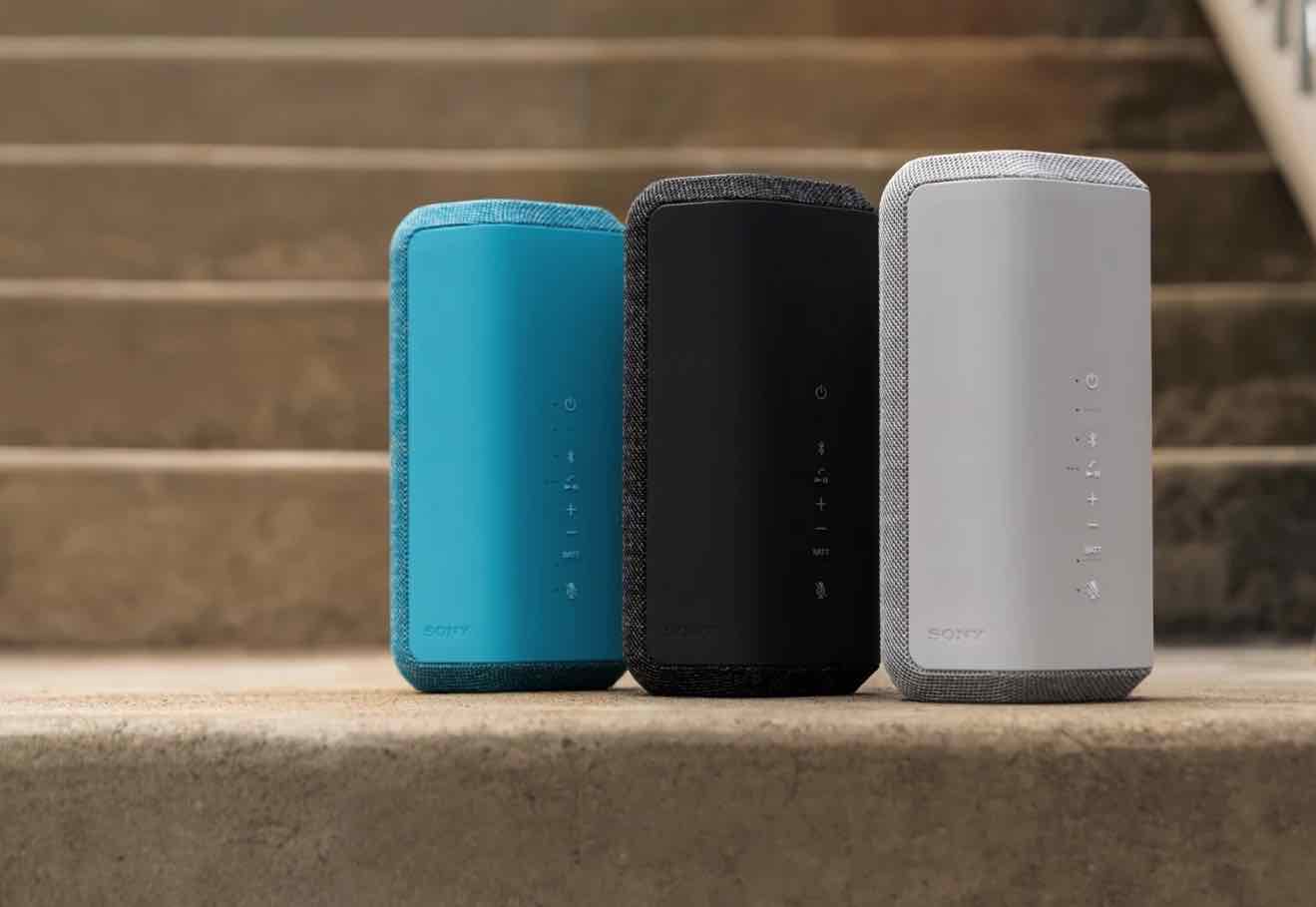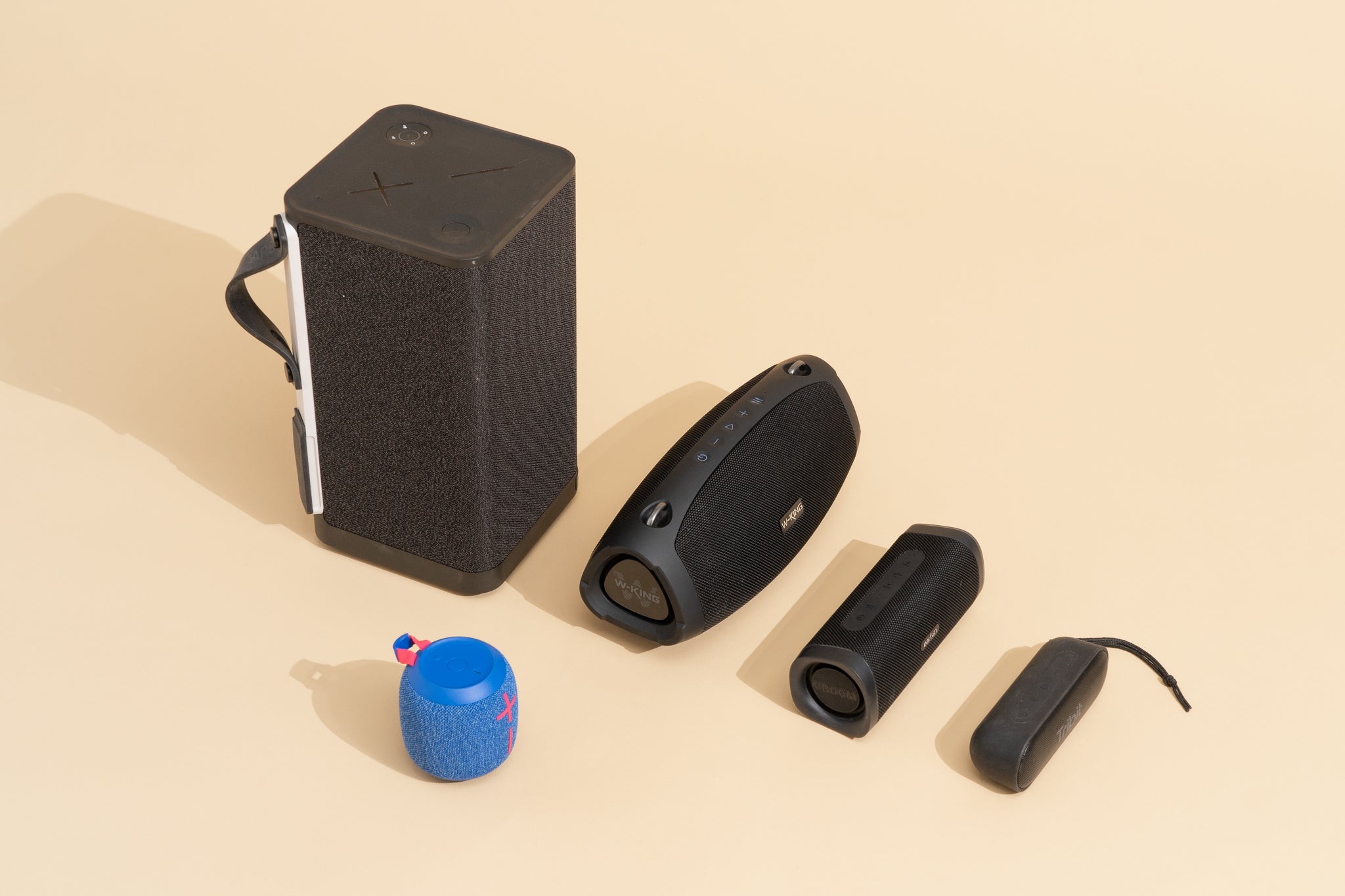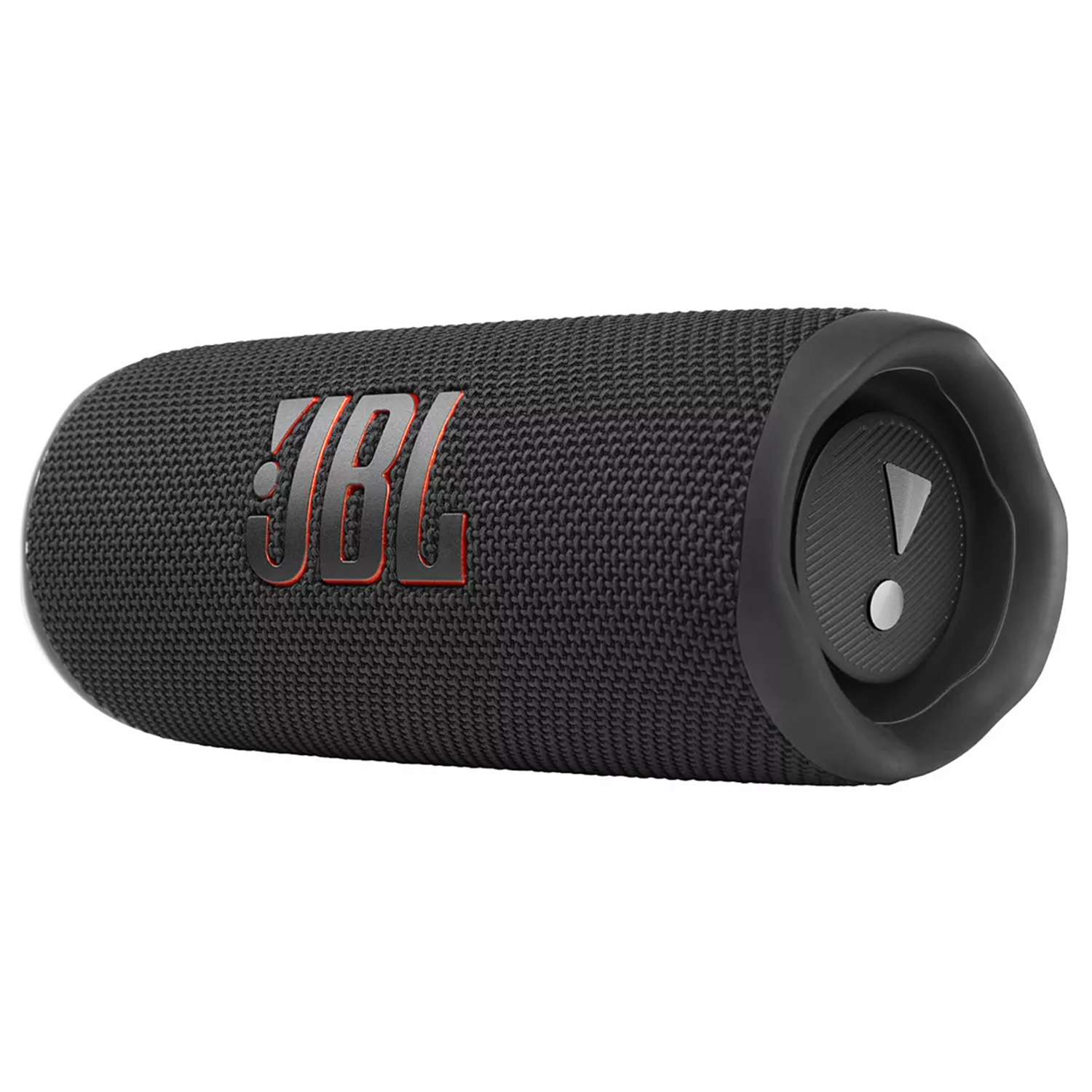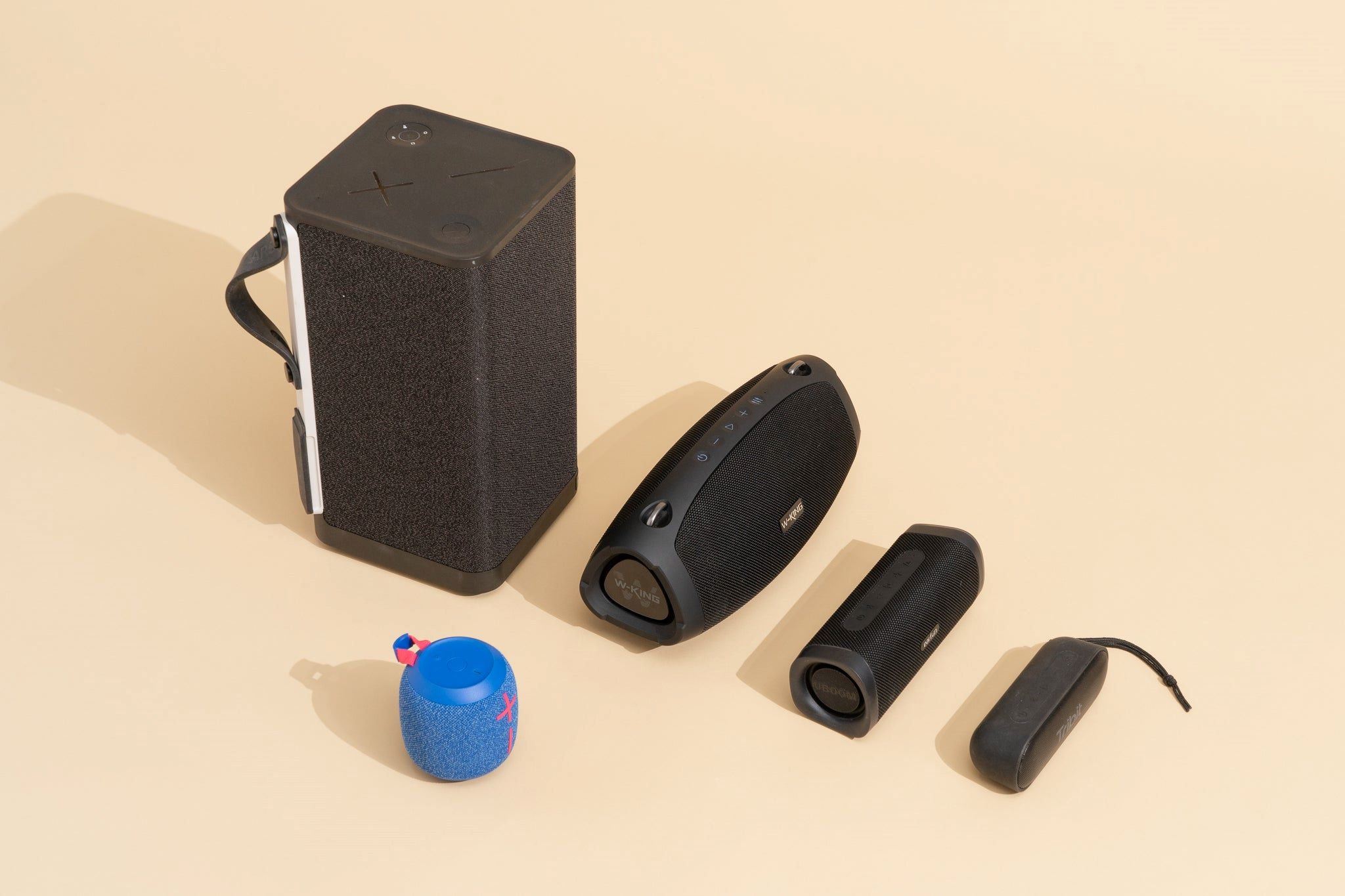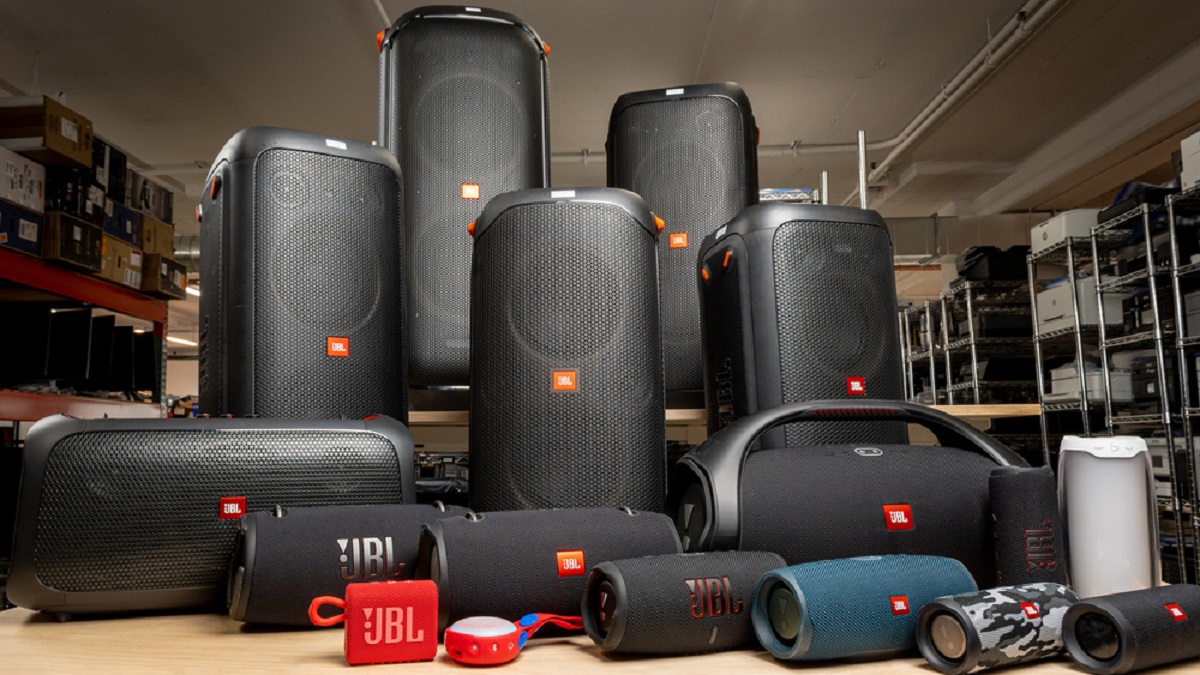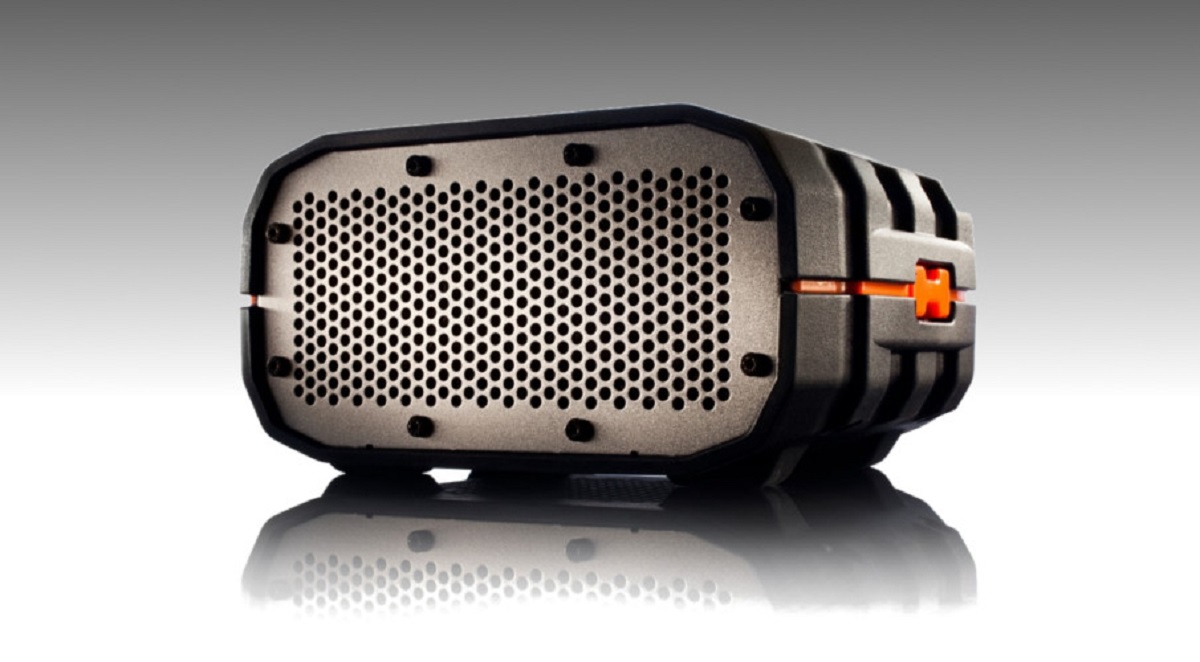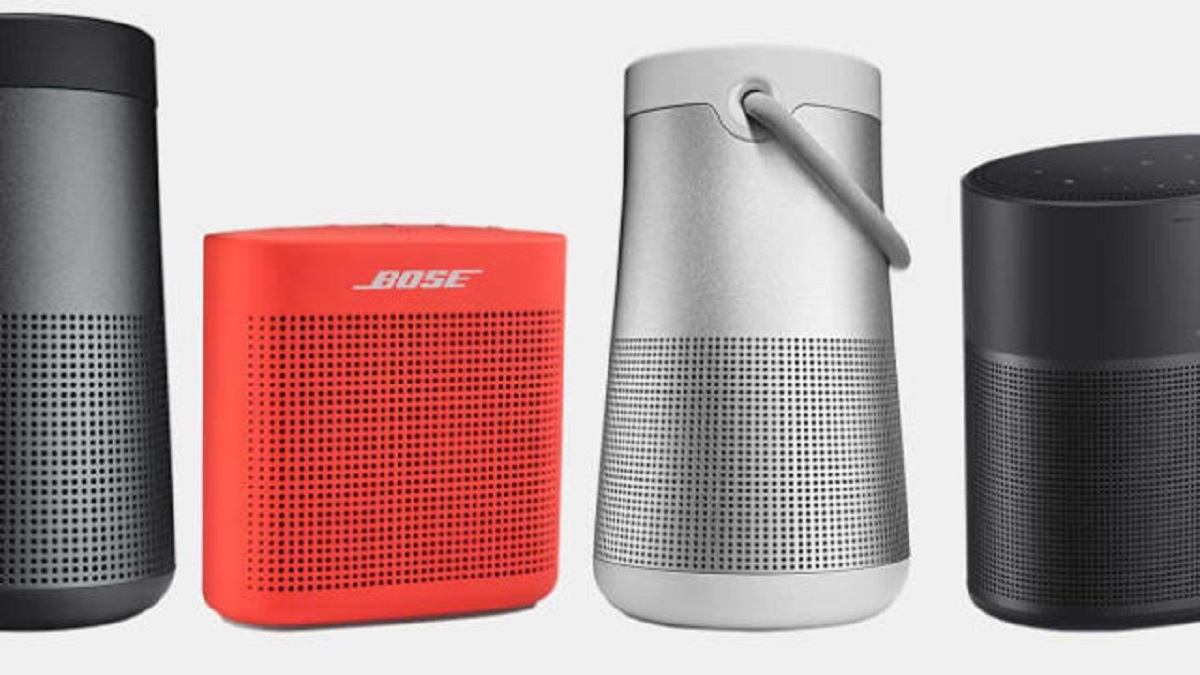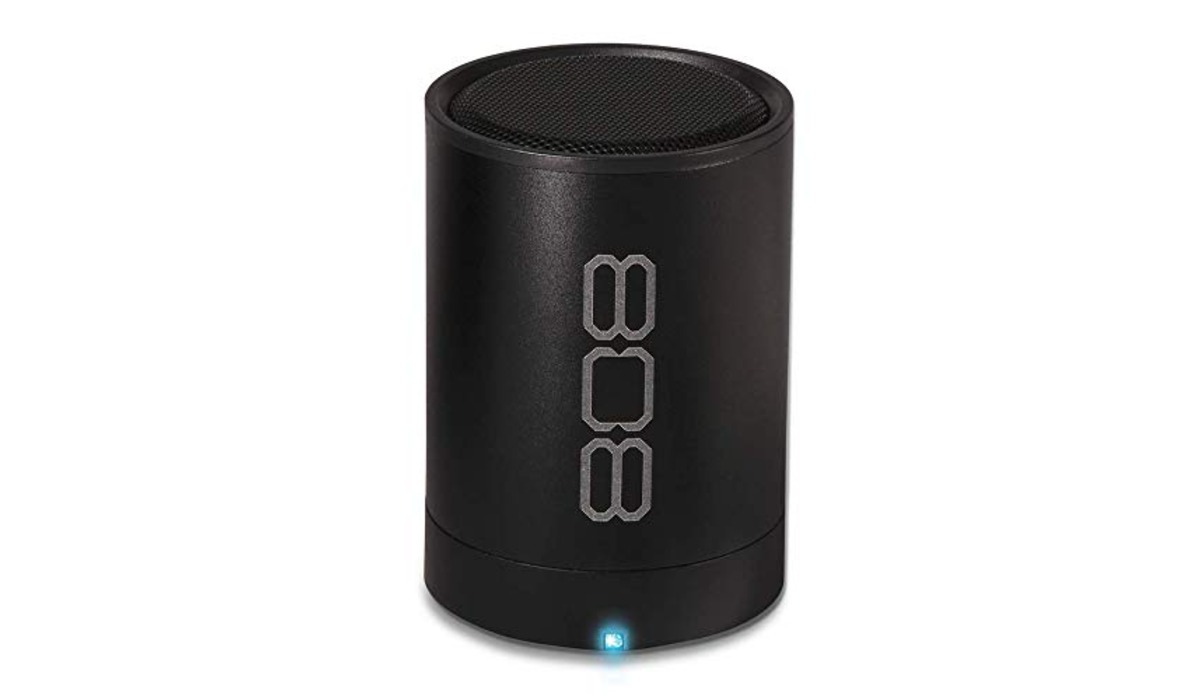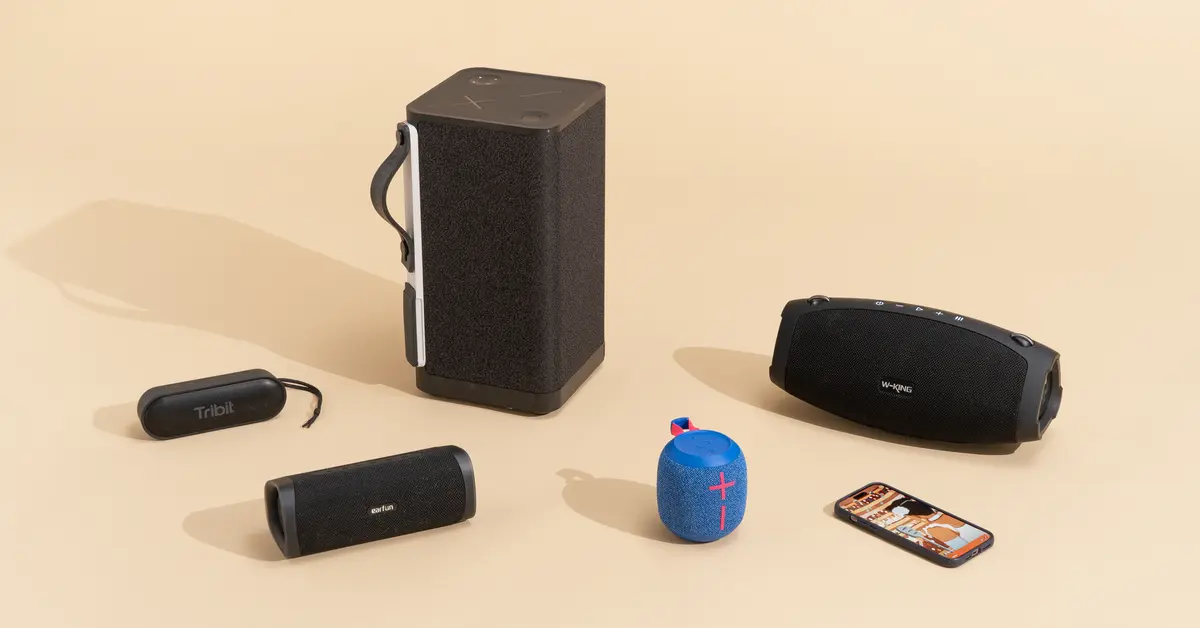Introduction
Bluetooth speakers have revolutionized the way we enjoy music and audio content. With the ability to connect wirelessly to our devices, they offer convenience and portability like never before. But what if you want to take your audio experience to the next level? What if you want to connect multiple Bluetooth speakers for a more immersive sound? The good news is, it’s entirely possible, and in this article, we’ll show you how.
Connecting multiple Bluetooth speakers allows you to create a synchronized audio experience, amplifying the sound and filling your space with rich, immersive sound quality. Whether you’re hosting a party or simply want to enhance your personal listening experience, having multiple speakers can make a significant difference.
However, it’s important to note that not all Bluetooth speakers are capable of being connected together. Some speakers have this feature built-in, while others may require additional hardware or software. In this guide, we’ll walk you through the process of connecting multiple Bluetooth speakers, step-by-step, to help you enjoy a truly multi-dimensional audio experience.
Before we get started, make sure you have compatible Bluetooth speakers and devices. Ensure that your speakers support the same version of Bluetooth as your connecting devices. Additionally, check if your devices have Bluetooth capabilities and that they are enabled. Keep in mind that the exact steps may vary slightly depending on the specific brands and models of speakers and devices you are using.
So, if you’re ready to take your audio experience to the next level, let’s dive into the process of connecting to multiple Bluetooth speakers!
Understanding Bluetooth Speaker Pairing and Connection
Before we dive into the steps of connecting multiple Bluetooth speakers, it’s important to understand the basics of Bluetooth pairing and connection. Bluetooth is a wireless technology that allows devices to communicate and transfer data over short distances. In this case, it enables your audio source, such as a smartphone or tablet, to connect and stream audio to the Bluetooth speakers.
Pairing is the process of creating a secure connection between your device and the Bluetooth speaker. Most Bluetooth speakers require initial pairing to establish a connection. Once paired, subsequent connections are usually automatic, as long as the Bluetooth is enabled on both the device and the speaker.
To pair your device with a Bluetooth speaker, follow these general steps:
- Turn on the Bluetooth speaker and make sure it is in pairing mode. This usually involves pressing and holding a dedicated pairing button on the speaker.
- On your device, go to the Bluetooth settings and enable Bluetooth if it’s not already enabled.
- Select the Bluetooth speaker from the list of available devices.
- Once the pairing is successful, the speaker will be connected to your device, and you can start playing audio through it.
It’s worth mentioning that some speakers support multi-pairing, which means they can connect to multiple devices simultaneously. However, not all speakers have this feature, so make sure to check the specifications of your speakers if you’re looking to connect them to multiple devices.
Now that you have a basic understanding of Bluetooth pairing and connection, let’s move on to the step-by-step process of connecting multiple Bluetooth speakers.
Step 1: Make sure your speakers are compatible with Bluetooth connection
Before you can connect multiple Bluetooth speakers, it’s crucial to ensure that your speakers are compatible with Bluetooth connectivity. Not all speakers have this capability, so you need to confirm that your speakers support Bluetooth technology.
Check the user manual or the product specifications of your speakers to verify if they have Bluetooth functionality. Look for keywords like “Bluetooth,” “wireless,” or “supports wireless connection.” If you’re unsure, you can also search for the model online or contact the manufacturer for more information.
In addition to Bluetooth compatibility, it’s essential to consider other features that might enhance your audio experience. Look for speakers that support stereo pairing or have the ability to connect to a multi-room speaker system. These features can further enhance the audio quality and create a more immersive sound.
Some speakers also offer additional connectivity options like NFC (Near Field Communication), which can simplify the pairing process by allowing you to connect with a simple tap. While not necessary for connecting multiple speakers, these features can be convenient and add flexibility to your setup.
In summary, before you proceed with connecting multiple Bluetooth speakers, ensure that your speakers have Bluetooth compatibility. Confirming this compatibility will ensure a smooth and seamless pairing process, allowing you to enjoy a synchronized audio experience across multiple speakers.
Step 2: Enable Bluetooth on your devices
Once you have confirmed that your speakers are compatible with Bluetooth, the next step is to enable Bluetooth on the devices you want to connect. Whether it’s your smartphone, tablet, or computer, enabling Bluetooth is a crucial step in establishing a wireless connection.
The steps to enable Bluetooth may vary slightly depending on the device and operating system you are using. However, the general process is as follows:
- Open the settings menu on your device. This can usually be done by swiping down from the top of the screen (on mobile devices) or clicking on the settings icon in the app drawer (on computers).
- Navigate to the Bluetooth settings. Look for an option labeled “Bluetooth” or an icon that represents Bluetooth connectivity.
- Toggle the Bluetooth switch to the “On” position. This will enable Bluetooth on your device.
Once Bluetooth is enabled on your device, it will start scanning for available nearby devices. Make sure your Bluetooth speakers are turned on and in pairing mode at this point. If your device detects the speakers, their names or model numbers should appear in the list of available devices.
Select the Bluetooth speakers from the list of available devices on your device’s Bluetooth settings. Follow any additional prompts or instructions that appear on your device’s screen. Once the connection is established, you’ll receive a confirmation message or notification indicating that the devices are paired and connected.
Keep in mind that some devices may have a limit on the number of Bluetooth connections they can establish simultaneously. If you plan to connect multiple speakers, ensure that your device supports this capability.
Congratulations! You have now enabled Bluetooth on your devices, setting the stage for connecting multiple Bluetooth speakers. In the next step, we’ll guide you through the process of pairing and connecting your first Bluetooth speaker.
Step 3: Pair and connect your first Bluetooth speaker
Now that Bluetooth is enabled on your devices, it’s time to pair and connect your first Bluetooth speaker. This step will establish a connection between your device and the speaker, allowing you to stream audio wirelessly.
Here’s how you can pair and connect your first Bluetooth speaker:
- Turn on your first Bluetooth speaker and ensure it is in pairing mode. Refer to the user manual for specific instructions on how to activate pairing mode. This might involve pressing and holding a designated Bluetooth button or a combination of buttons.
- On your device, open the Bluetooth settings menu and scan for available devices.
- Once your device detects the Bluetooth speaker, it should show up in the list of available devices. Select the speaker from the list to initiate the pairing process.
- Follow any on-screen prompts to complete the pairing process. This might involve entering a passcode or confirming a pairing request on both your device and the speaker.
- Once the pairing is successful, you’ll see a confirmation message on your device, indicating that it is now connected to the Bluetooth speaker.
After you’ve paired and connected your first Bluetooth speaker, you can start playing audio through it. Test the connection by playing some music or any audio content on your device. The sound should now be coming out of the Bluetooth speaker instead of the device’s built-in speakers.
If you encounter any issues with the connection, try restarting the Bluetooth on both your device and the speaker. Also, make sure you are within the recommended range for Bluetooth connectivity, which is typically around 30 feet or 10 meters.
With your first Bluetooth speaker successfully connected, you’re ready to move on to the next step: pairing and connecting additional Bluetooth speakers to create a multi-speaker setup.
Step 4: Pair and connect additional Bluetooth speakers
Now that you have successfully paired and connected your first Bluetooth speaker, it’s time to expand your audio setup by pairing and connecting additional speakers. This step will enable you to create a multi-speaker configuration and enjoy synchronized audio playback across all speakers.
Follow these steps to pair and connect additional Bluetooth speakers:
- Ensure that your first connected Bluetooth speaker is still powered on and connected to your device.
- Activate pairing mode on the second Bluetooth speaker by following the instructions provided in its user manual.
- Go to the Bluetooth settings menu on your device and scan for available devices.
- The second Bluetooth speaker should appear in the list of available devices. Select it to initiate the pairing process.
- Follow the on-screen prompts to complete the pairing process for the second speaker. This typically involves confirming the pairing request on both your device and the speaker.
- Once the pairing is successful, your device will recognize the second speaker, and it will be connected.
Repeat the above steps for any additional Bluetooth speakers you want to connect. Each speaker should be paired and connected individually in sequence. Remember to activate the pairing mode on each speaker and select it from the available devices in the Bluetooth settings menu on your device.
It’s important to note that the capability to connect multiple Bluetooth speakers simultaneously is dependent on both the speakers and the device you are using. Some devices have a limit on the number of Bluetooth connections they can maintain, while some speakers may only support a single connection.
Once you have successfully paired and connected all your Bluetooth speakers, you should now have a multi-speaker setup ready to deliver synchronized audio playback. Try playing some music or audio content on your device to experience the immersive sound spreading across all connected speakers.
If you encounter any issues during the pairing process or face difficulties connecting additional speakers, refer to the user manuals of your speakers and device for troubleshooting steps specific to your setup.
Now that you have connected multiple Bluetooth speakers, let’s proceed to the next step to ensure your audio playback is synchronized across all speakers.
Step 5: Sync the audio playback across multiple speakers
Now that you have successfully paired and connected multiple Bluetooth speakers, the next step is to ensure that the audio playback is synchronized across all the speakers. The synchronization will ensure that there is no delay or echo in the audio, providing a seamless and immersive audio experience.
Here are some methods to sync the audio playback across multiple speakers:
- Check if your connected speakers have built-in synchronization features. Some speakers come with advanced technology that allows them to automatically sync the audio playback. Look for options like “Sync” or “Multi-room Audio” in the speaker settings. Enable these features to ensure synchronized playback.
- If your speakers do not have built-in synchronization features, you can use third-party apps or software to achieve synchronization. There are various apps available for both iOS and Android devices that can help you sync the audio playback across multiple Bluetooth speakers. Research and choose an app that is compatible with your specific devices and speakers.
- Another option is to use audio synchronization hardware. These devices connect to your speakers and synchronize the audio playback, ensuring a consistent audio experience. They may require additional setup and configuration, but they can be a reliable solution for achieving synchronization.
- Experiment with speaker placement. Sometimes, adjusting the positioning of your speakers can help mitigate any audio delay or echo. Place the speakers equidistant from the listening area and make sure they have a clear line of sight to the Bluetooth device.
- If all else fails, consider investing in a Bluetooth transmitter that supports multi-speaker synchronization. These transmitters connect to your audio source and broadcast the audio signal to multiple Bluetooth speakers simultaneously. They typically provide more precise synchronization control and can be a reliable solution for achieving perfect audio synchronization.
Remember to consult the user manuals of your speakers and devices for specific instructions and guidance on achieving audio synchronization. The methods mentioned above may be implemented differently based on the models and brands you are using.
Once you have successfully synced the audio playback across your multiple Bluetooth speakers, sit back, relax, and enjoy an immersive audio experience like never before!
Step 6: Troubleshooting common issues
While connecting multiple Bluetooth speakers can greatly enhance your audio experience, you may occasionally encounter some common issues. Here are some troubleshooting tips to help you address these issues and ensure smooth connectivity:
- Distance: Make sure that the Bluetooth speakers and your device are within the recommended range for Bluetooth connectivity. If the speakers are too far apart, it can result in a weak or unstable connection.
- Interference: Bluetooth signals can be disrupted by other wireless devices or physical obstructions. Keep your speakers away from other electronic devices and ensure that there are no physical barriers between the speakers and your device.
- Device compatibility: Double-check that your device’s operating system is compatible with the Bluetooth speakers you are trying to connect. Check for any available software updates for your device to ensure optimal compatibility.
- Resetting the speakers: If you’re experiencing issues with a specific speaker, try resetting it. Refer to the user manual for instructions on how to perform a factory reset. After resetting, repeat the pairing process to establish a fresh connection.
- Bluetooth interference: Sometimes, other Bluetooth devices in the vicinity can interfere with your speakers’ connection. Try disconnecting or turning off any nearby Bluetooth devices to see if it improves the connectivity.
- Update firmware: Check if there are any firmware updates available for your Bluetooth speakers. Manufacturers often release updates to enhance performance and address compatibility issues. Visit the manufacturer’s website or contact customer support for guidance on updating the speaker’s firmware.
- Restarting devices: If you are experiencing connectivity issues, try restarting both your Bluetooth speakers and your device. This simple step can often resolve temporary issues and establish a stable connection.
- Check battery levels: Ensure that your Bluetooth speakers have sufficient battery power. Low battery levels can lead to connectivity problems or audio disruptions.
- Pairing sequence: If you’re connecting multiple speakers, make sure to follow the correct pairing sequence outlined in the user manual. Connecting the speakers in the wrong order can result in connectivity issues.
If you’ve tried troubleshooting the issues and are still unable to resolve them, consult the user manuals of your Bluetooth speakers and device, or reach out to the manufacturer’s customer support for further assistance.
By addressing common issues and resolving connectivity problems, you can enjoy a seamless and uninterrupted audio experience across your multiple Bluetooth speakers.
Conclusion
Connecting multiple Bluetooth speakers can elevate your audio experience to new heights, giving you the opportunity to create a multi-speaker setup that provides immersive and synchronized audio playback. By following the step-by-step process outlined in this guide, you can easily pair and connect multiple Bluetooth speakers, allowing you to enjoy a rich and dynamic sound across your space.
Ensure that your speakers are compatible with Bluetooth technology and that you enable Bluetooth on your devices before attempting to connect them. Remember to pair and connect each speaker individually, following the specific instructions provided in their user manuals. Additionally, take the time to synchronize the audio playback across all connected speakers to eliminate any delays or echo.
If you encounter any issues during the process, such as connectivity problems or audio synchronization difficulties, refer to the troubleshooting tips provided in this guide. With a bit of troubleshooting, you can overcome common obstacles and create a seamless audio experience.
Remember that the steps and features discussed in this guide may vary depending on the specific models and brands of your Bluetooth speakers and devices. Always refer to the user manuals and instructions provided by the manufacturers for accurate and detailed guidance specific to your setup.
So, take the plunge and explore the world of multi-speaker audio with Bluetooth connectivity. Whether you want to amplify your music, create a home theater experience, or enhance your outdoor gatherings, connecting multiple Bluetooth speakers is sure to add a new dimension to your audio enjoyment.
Get ready to immerse yourself in a world of rich, enveloping sound as you enjoy the convenience and portability that Bluetooth speakers offer. Start connecting, syncing, and experiencing audio like never before!







